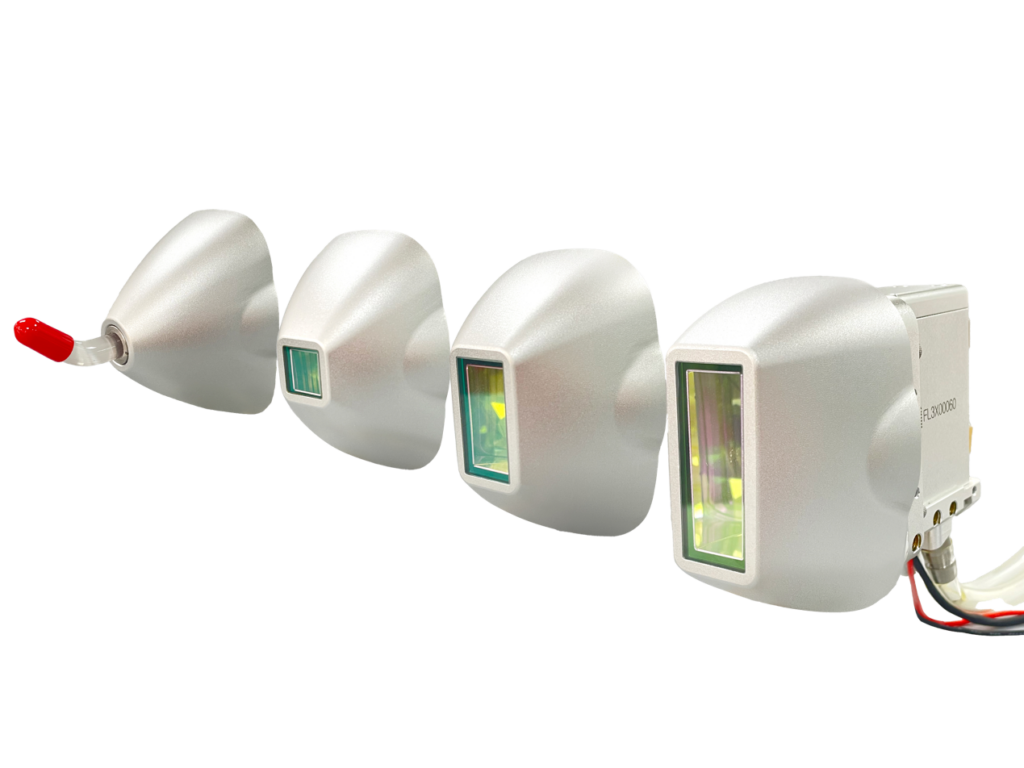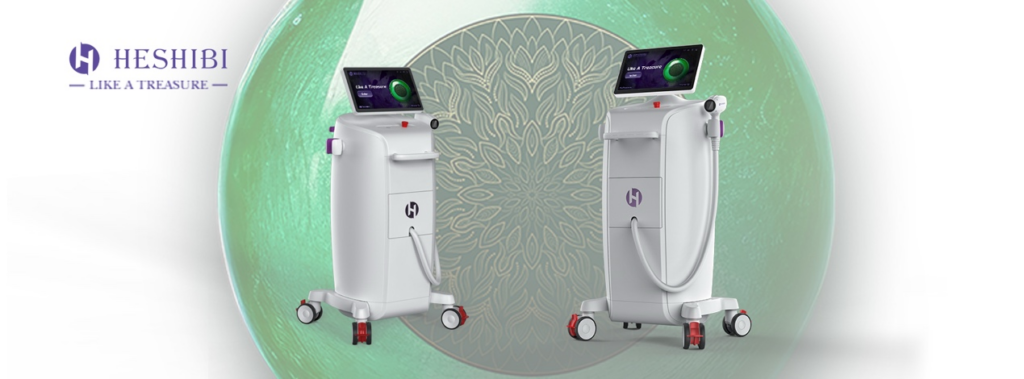You’ve invested time, money, and hope into achieving smooth, hair-free skin, only to be met with disappointing results. Whether you’re struggling with a high-tech at-home device or questioning the effectiveness of a recent clinic treatment, the frustration is real. If you find yourself asking, “Why is my laser hair removal not working?” you are not alone. The problem often isn’t you—it’s the technology and the method.
This article will uncover the real, science-backed reasons for poor hair removal results. We’ll explore the critical differences between professional and at-home solutions and reveal why the choice of device is the single most important factor in your journey to permanently reducing unwanted hair.
Table of Contents
ToggleThe 3 “Traps”: Professional vs. At-Home Laser Hair Removal
Many at-home devices promise professional results, but their underlying technology has fundamental limitations that prevent them from matching the efficacy of in-clinic treatments. Here are the three core technical differences that lead to poor outcomes.
Trap 1: Insufficient Power and Energy
The success of laser hair removal hinges on a principle called Selective Photothermolysis (SPTL). This process requires a specific amount of light energy to be absorbed by the melanin (pigment) in the hair follicle, converting it into heat and destroying the cells responsible for hair growth.
The key metric here is energy density (fluence), measured in Joules per square centimeter (J/cm2). If the energy is too low, it may only stun the follicle temporarily instead of destroying it.
- Professional Power:Professional diode lasers are powerful enough to deliver high fluence, leading to hair reduction rates of 85% to 88%.
- At-Home Limitations:Compared to professional medical equipment, at-home devices are designed for safety above all else, meaning they operate at a much lower power. They deliver an estimated five times less energy per session. Studies on at-home devices show significantly lower reduction rates, ranging from just 46.3% to 52%.
If the laser’s energy is too weak, it simply can’t generate enough heat to achieve permanent follicle damage, leaving stubborn hairs behind.
Trap 2: Imprecise Wavelengths (IPL vs. Laser)
A common point of confusion is the difference between Intense Pulsed Light (IPL) and a true laser. Most at-home devices are IPL-based.
- IPL is not a laser. It uses a broad spectrum of scattered light wavelengths (typically 400-1200nm). This light is unfocused and less concentrated, making it less efficient at targeting the deep hair root. This is often why users find IPL not working on brown spots or specific hair types—the energy is too dispersed.
- Professional lasers(like Diode, Alexandrite, and Nd:YAG) use a single, concentrated wavelength of light that penetrates deeply and precisely to the hair follicle. The 808nm diode laser wavelength, for instance, is considered the gold standard for its optimal balance of safety and effectiveness on most skin and hair types. Deeper wavelengths like 1064nm are the safest choice for dark or tanned skin, while the 755nm wavelength is effective for fine, light-colored hair.
A true laser provides a faster, more targeted, and more permanent result because its focused energy is absorbed directly by the follicle with minimal impact on the surrounding skin.
Trap 3: Lack of Advanced Cooling
Generating enough heat to destroy a hair follicle can be uncomfortable and potentially dangerous for the skin’s surface (the epidermis). Epidermal cooling is essential for safety, comfort, and effectiveness, as it allows the practitioner to use a higher, more effective fluence without risking burns.
Professional machines incorporate sophisticated cooling systems:
- Contact Cooling:Uses a sapphire window or circulating water to cool the skin on contact.
- Cryogen Spray:A quick burst of cooling spray applied just before the laser pulse.
- Forced Cold Air:Some systems can blow air as cold as -34°C onto the treatment area.
At-home devices typically lack any advanced built-in cooling mechanisms, which is another reason their energy levels must be kept low, limiting their effectiveness. In contrast, Heshibi’s professional DioFlex machine uses a medical-grade compressor combined with a sapphire contact cooling head to keep the handpiece surface at a constant ~5°C, protecting the epidermis and ensuring a virtually painless experience.
Beyond the Device: Other Reasons for Failure
Even with professional equipment, other factors can lead to the feeling that your laser hair removal is not working.
- Inconsistent Treatment Schedule:Laser hair removal is only effective when the hair is in its anagen (growth) phase, as this is when the hair is connected to the follicle and contains the most melanin. Since not all hairs are in the same phase at the same time, treatments must be properly spaced—typically 4 to 8 weeks for the body and 2 to 4 weeks for the face—to catch each hair in its growth phase. Missing or delaying appointments allows follicles to slip back into a dormant phase, making the treatment ineffective.
- Incorrect Settings or Technique:A successful treatment requires the operator to customize parameters like fluence and pulse duration based on the patient’s skin type, hair color, and hair thickness. Settings that are too low will fail to destroy the follicle, while settings that are too high risk skin damage. A good clinical endpoint is the presence of mild redness (erythema) around the follicles, indicating a successful response.
- Hormonal Conditions and Medications:Hormonal imbalances, such as Polycystic Ovary Syndrome (PCOS), can stimulate new hair growth, making treatments more challenging. Furthermore, recent sun exposure or taking photosensitive medications can increase the risk of burns and hyperpigmentation, forcing practitioners to use lower, less effective energy settings.
The Heshibi Tech Solution: Professional Technology for Flawless Results
Understanding these factors makes it clear: the technology used is paramount. At Heshibi Tech, we specialize in manufacturing professional diode laser hair removal machines that empower salons and clinics to deliver the results their clients deserve.
All our equipment is CE and FDA certified, ensuring the highest standards of safety and performance. Our systems are designed to overcome the limitations of lesser technologies:
Model | Key Features | Wavelengths & Cooling |
Dual-head diode laser with independently adjustable power, an ultra-fast 20Hz pulse speed, and a lifespan of over 10 million shots. | 755/808/940/1064nm options; High-performance TEC and compressor cooling. | |
Single handpiece integrating four wavelengths (755nm, 808nm, 940nm, 1064nm) for all skin and hair types. | Features a high-quality Coherent laser bar (20 million shot lifespan) and advanced TEC cooling for a painless experience. | |
Features four interchangeable spot sizes to perfectly adapt to any treatment area, from large to small. | Utilizes a medical-grade compressor and sapphire contact cooling head to maintain a surface temperature of ~5°C. |
Conclusion
If you’ve been wondering why your laser hair removal is not working, the answer almost always lies in the gap between consumer-grade gadgets and professional-grade technology. The power, precision, and safety features of in-clinic diode lasers provide a demonstrably superior path to permanent hair reduction.
For clinics and salons looking to elevate their services, Heshibi Tech offers solutions engineered for maximum efficacy, stability, and professional use. We support our partners with a 5-year warranty, a 1-year free replacement policy for non-artificial quality issues, and comprehensive online and on-site training.
Invest in technology that delivers real results. Contact Heshibi Tech today for a free consultation and discover how our advanced laser systems can transform your business.




